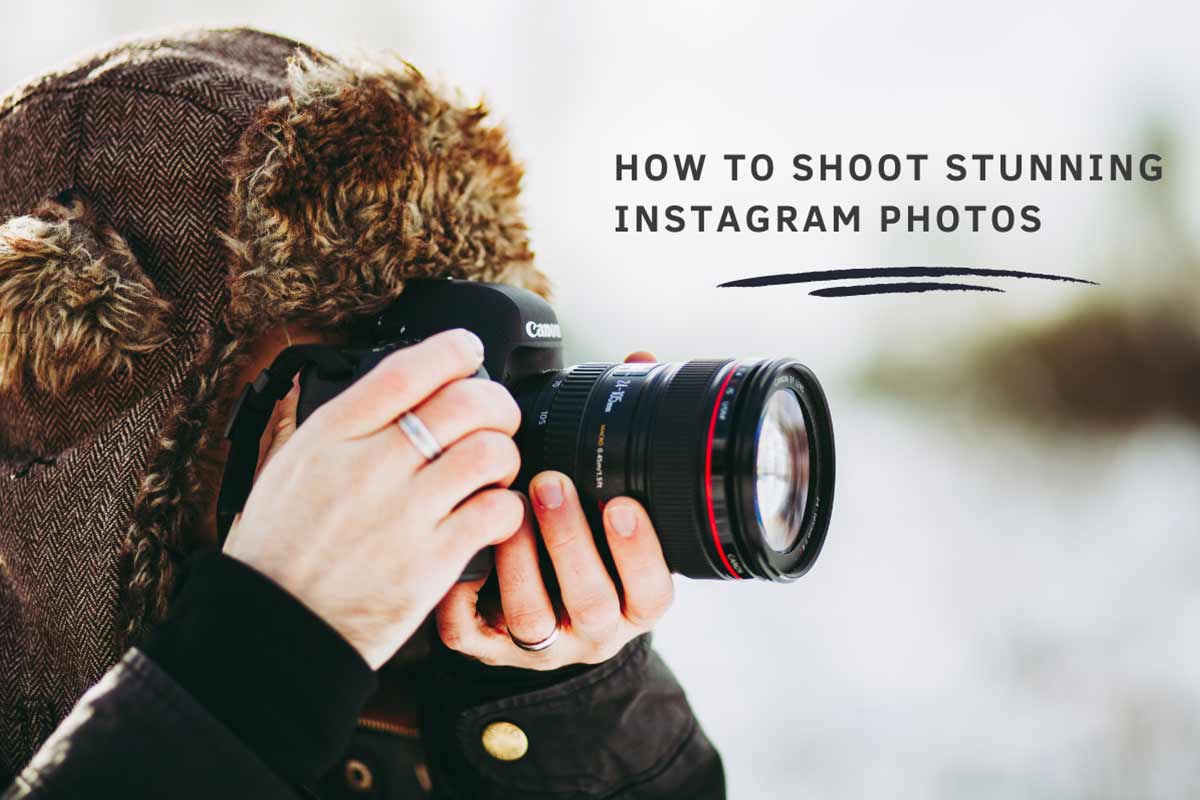Every business that stays at the forefront of your mind today is a brand. From Coca Cola with their magic touch, feel, and spread of happiness to Nike with the “just do it” motivation. When you think about these brands, you’ll realise that they do not only sell the solution they provide in the form of their products; they also sell a feeling, an idea that quickly makes you a loyal customer.
Most businesses sell the same thing that you do. But your effort at Branding truly attracts the customers and makes your marketing successful. Curious about why branding is important in marketing? Let’s dive deeper.
What is Branding in Marketing?
Branding in marketing is the act of connecting with your target audience on a much deeper level through storytelling, your logo, your brand colours, etc. Every brand element you devise generates a perception of your brand in the minds of your target audience.
Other brand elements range from your employee culture to your customer services. If your customer care agents are rude towards your audience, your customers will hesitate to return to you the next time they need the kind of service you provide.
Your Branding affects and influences your consumer’s perception of your brand. One fantastic fact about Branding is that you can control your customers’ perceptions.
What Are the Different Types of Branding?
1. Personal Branding

Branding involves giving your product a personality. But you’re a human being with a personality already. So, what is personal Branding in marketing? Personal Branding does not require you to spend time trying to create a character or identity for yourself; you already have that. Your focus should be to communicate your unique personality by building a positive public image.
This public image has to communicate your values and interests as an individual. You’ll need to create a public image that projects your personality. For instance, aside from Vayner media and all his other businesses, Gary Vaynerchuk has successfully built a personal brand for himself that communicates his ideals that uniquely motivates people.
2. Product Branding

Product branding is the most common type of Branding that exists. It requires creating an identity for products that a brand sells to your target audience. You’ll need to invest in the logo, the slogan, colours, and overall look and feel of the product to create an impression in your target audience’s mind.
You have to carefully choose your product brand element in a way that prompts them to purchase your product at first glance. Sometimes, the aesthetics your product design creates for your audience is one of the factors that attract them to the brand you’ve built, converting them into return customers.
3. Corporate Branding
The goal of corporate Branding is still the same as with personal and product Branding; creating a brand identity. However, the subject matter differs this time around. That is, your target is a corporate organisation.
In essence, think of it as company branding because you’ll create a public image or identity for a corporate company. In this type of Branding, you’ll need to deploy tons of branding strategies covering everything about the company from the products and services they provide to their staff, brand proposition, customer service, etc.
4. Service Branding
Service branding is not too different from product branding on a larger scale because it focuses on creating an identity for services. The difference between product branding and service branding is that, while products are tangible, it isn’t the same for service branding. Services are intangible; hence you’ll require unique branding strategies in creating and marketing the brand.
A considerable part of this branding process is experiential when branding a service. That is, you have to show your potential customers the experience they’ll get by subscribing to your service. Your communication should be geared towards showing your target the impeccable service they stand to gain when they choose you. For example, every fly Emirates ad is geared towards showing you the kind of service you’ll enjoy when you travel with their airline.
5. Geographical Branding

Geographic Branding is usually geared toward persuading people to visit or invest in a specific location in a country or city. If the goal is to make people stay, Branding experts often showcase the iconic features of the geographic area. They’d publish exciting facts and artefacts hidden in the region, so it piques the curiosity of tourists worldwide, prompting them to visit the geography to see what it’s about. This type of Branding thrives on selling the unique features of a place to get the desired results.
6. Co-branding
Co-branding pairs Branding with a partnership. Here, two, unlike brands, partner together to piggy bank off each other, vouching for each other’s originality in the process. As a result, they make it safe for their target audiences to patronise the partner brand without batting an eye. A viral example of co-branding is BMW and Louis Vuitton’s “The art of travel” campaign that gives their target audience the chance to travel luxuriously; in BMW i8 and Louis Vuitton’s 4-piece suitcases and bags.
7. Activist Branding
Activism Branding is about deploying some of the best branding strategies to create social impact. If you believe in a cause, you should invest in talking about it. Dove and its consistent effort to build self-esteem and positivity are good examples.
8. Online & Offline branding
Online and offline Branding are generic Branding and branding marketing management that occurs online. All personal Branding, product branding, and other branding efforts in the online space are classified as online Branding. Offline Branding refers to Branding that takes place offline.
The Importance of Branding to Your Marketing Strategy
1. Brand Recognition
When you create your brand, part of Branding requires you to devise logos, brand colours, product packaging, brand aesthetics, and more. As you continue to deploy these branded materials and top-notch services or products, your customer and target audience will start to associate your brand essence with the service you offer.
Hence, when they see a service delivered in a manner or a product without even seeing the logo, your customers would instantly recognise your brand without looking at the logo. For instance, once you see an iPhone, you can already tell it is an iPhone by merely observing the aesthetics and design. You might not need to refer to the logo to know it is an iPhone from Apple. That’s one of the roles of Branding; to foster brand recognition.
2. Brand Awareness
Another thing branding does is create brand awareness. While marketing the brand you’ve built, your branding efforts would expose your unique brand to your target audience. As you communicate your brand to your audience in your unique brand voice, with your identity and kit of parts., you’ll bring your brand to the forefront of your target audience’s mind. So, when they need your product or services, they’ll reach out to you immediately.
3. Brand Identity
High-quality branding is crucial for the development of your Brand Identity. Working with a professional brand strategist can develop deeper meaning and depth into your brand image. Imagine if you had a great product but didn’t have a name, logo, unique product design or package? Regardless of how excellent your product or service is, no one would patronise you because they don’t think your brand is trustworthy.
Besides, they might devise reasons to believe that your product is harmful to them, so they’ll avoid it as much as they can. However, because one of the roles of Branding is to give your brand an identity, it helps you conquer the first stage of attracting your target audience.
4. Branding & Competitive Advantage
Another thing branding does for you is earn you that competitive advantage. While other businesses like yours manufacture and provide similar goods and services, your branding strategies would place you at the top of the food chain.
Depending on how you uniquely brand and market your products or services, the target audience in your business’s field would naturally lean towards your brand. For instance, in a blind taste test between Cocacola and Pepsi, research shows that Pepsi tastes sweeter than Cocacola. However, thanks to its consistent and unique Branding, people continue to prefer Coca-Cola to Pepsi.
5. Branding Creates Trust within the Marketplace

When you have a brand and you’re in the public eye, people tend to trust you for several reasons. For starters, the fact that a considerable number of people use your product says a thing or two about your reliability.
More so, if anything goes wrong with the product, your target audience knows that you will respond accordingly and can easily hold you accountable, either for a refund or a new product. The point is, the more your target audience trust you, the more they’ll patronise you without hesitating.
6. To Influence Customer Buying Behaviours
Part of what Branding in marketing does is map out your customer experience journey. So, when they see and hear your brand proposition, you’ll disrupt their buying journey, influencing their buying behaviours in the process.
For instance, if a customer needs to get an apartment and usually needs to go through a local agent, you’d influence their buying behaviour with your Branding. If you offer house-hunting services in a refined manner that eliminates most of the stress they’d have to go through when they use a local agent, the next time your target audience needs to house hunt, they will approach your brand for ease and convenience you give them.
7. A Strong Brand Involve Employees
Your employees are crucial to the success of your business. That’s why you have to involve them in your branding strategies, especially in corporate Branding.
When you’ve taken the time to create a solid brand, your employees will be delighted and proud to work with you. They’ll also put in their best work to keep up the brand image.
8. A Brand Acquires Customers Easily
One thing Apple and other top brands have is to attract customers easily. That’s the reason Apple’s latest iPhone release, regardless of how expensive it is, is coveted.
It’s the same with Kylie Cosmetics and Fenty Beauty. Most of their products usually get sold out within minutes of their launch, and it’s all thanks to their branding strategies that have turned the brands into solid brands.
9. A Brand Can Earn Credibility in Your Customer
Branding earns you credibility in your customer. With good Branding in place, your customers would naturally and blindly trust you. They’d never have any cause to believe that you could harm them.
10. To Increase Revenue & Market Share
Branding in marketing attracts your ideal target audience because your brand voice speaks to them in the voice they understand. When Branding is solid and doesn’t lack consistency, your customers would increase as your brand would attract tons of customers like sugar attract a host of ants. As a result, you’ll increase your revenue and own a large piece of the market share.
FAQ
Why should you care about branding?
One reason you should care about Branding is for the sake of recognition and awareness. Regardless of how perfect your product is, if your target audience doesn’t recognise your brand, they would be sceptical about doing business with you. Good branding births brand awareness and recognition. Awareness and recognition promote trust. When your target audience trusts you, they won’t hesitate to do business.
Why does a better brand mean better marketing?
The simple reason is that Branding helps you carve out a fantastic consumer experience journey. In essence, when your target audience uses your product and services, they’d get more than they subscribed to.
What is eCommerce branding?
eCommerce branding refers to the collective effort that eCommerce stores invest in to create an identity for their business. Their identity forms a perception about their products and services in the minds of their target audience.
Why is consistency important in branding?
Consistency in branding aids recognition. It ensures that once your target audience or consumers set their eyes on your product or services, they recognise it before seeing the logo. It’s a great way to build uniqueness.
How do branding benefit marketers and customers?
For marketers, Branding builds credibility and customer loyalty. It makes it easy for customers to decide what they want for customers. For instance, if your customers are looking for a result with a product, they would patronise your brand because they know you’ll effortlessly provide them with the impact they seek.
Final Verdict
Now that you know the importance of branding in marketing, you can tell that it’s more than just slamming a logo, colour, etc., on a product and selling it to your target audience, hoping they’ll become loyal customers overnight. Frankly, a lot goes into Branding to form a good perception in your audience’s minds and control the perception they create in their minds.Hence, you have to carefully build your brand so you’ll pass the right message to your target audience. Getting the right branding strategies for your brand makes it easier to attract your target audience flawlessly



